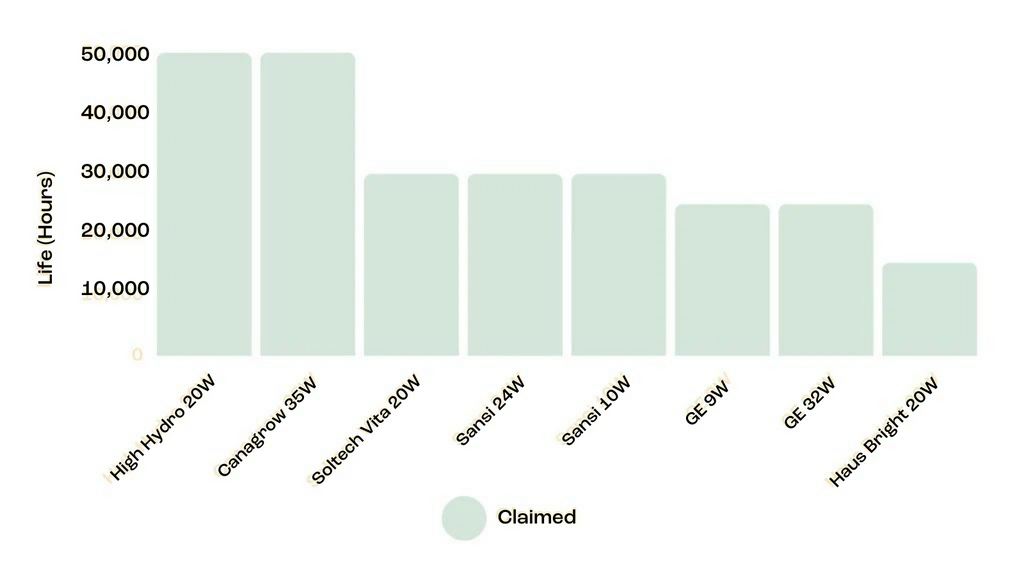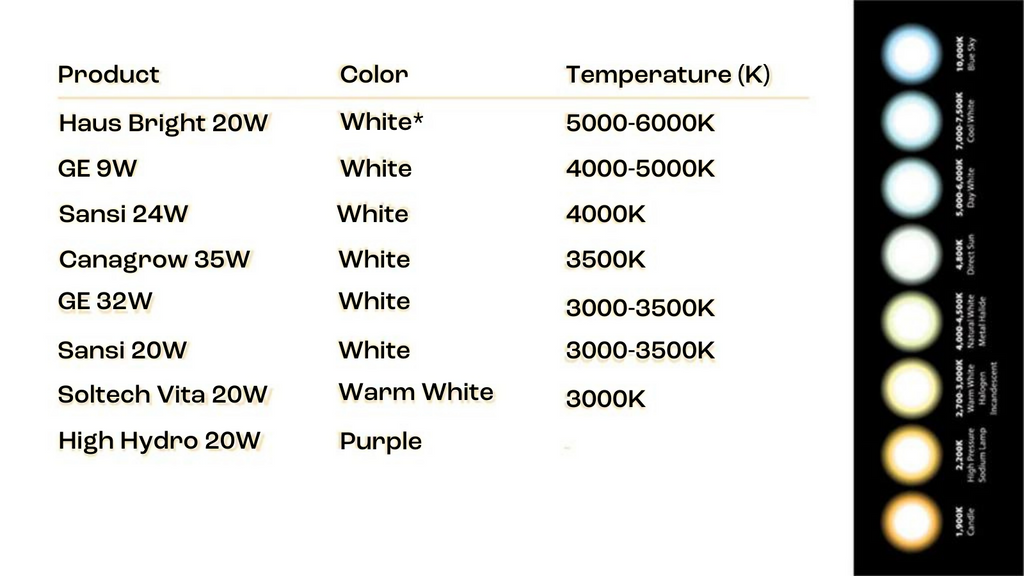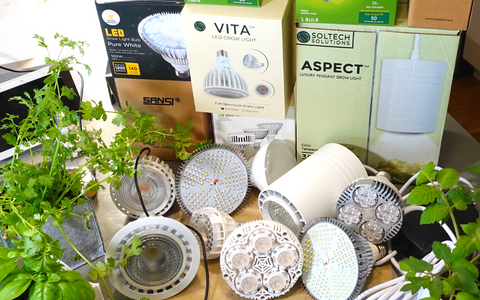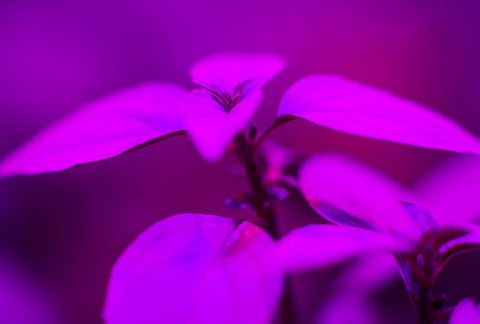Are you looking for a LED grow light for your plants, but feeling overwhelmed by the options? Or perhaps all the technical jargon has you feeling utterly confused?
The good news is, you're not alone. Grow lights are hard enough to understand even when you have reliable information, and the truth is that in unregulated marketplaces like Amazon.com sellers are allowed to make all sorts of unsubstantiated claims. In our experience and professional opinion, these claims can range from flat out wrong to intentionally misleading. Unfortunately, choosing the wrong grow light can mean you end up throwing money down the drain.
In this blog, we review the top screw-in type grow lights available on Amazon in 2022, compare and contrast them based on their key attributes, and provide our recommendations for which one(s) you should consider for specific use cases.
**Please Note: This blog contains affiliate links. You don't pay any extra by using our links, but doing so helps buy us a cup of coffee every now and then, which we sure do appreciate :)**
Why Choose E26 Grow Light Bulbs?
E26 grow light bulbs are also known as ‘screw in’ bulbs. This terminology simply means that they have the same ‘screw in’ thread/socket size as many of the conventional light bulbs that you are likely to have lying around at home.
There are 3 main reasons why we recommend E26 / screw-in bulbs as your first grow light:
- They’re affordable. The options we reviewed range from $10 up to $85. Even once you include a stand and timer, you can have a complete automated grow light setup for as little as $40.
- They are easy to integrate. You can choose a housing or lamp that suits your home's décor.
- They are easily upgradable and interchangeable.
Choosing the Best LED Screw-in Plant Grow Light Bulbs
There are many ways to compare these grow lights, but we'll start below by comparing them based on their raw energy output.
What are the Best E26 Grow Light Bulbs Based on Output?
If your sole objective is to buy as much output as you can for every dollar spent, then you’ll want to look at the GE32W, the Canagrow 35W, or the GE 9W. These units all ranked the highest in terms of PPF of output per dollar spent.

What are the Best E26 Grow Light Bulbs Based on Power?
The upfront purchase cost of these units only represents about 30-70% of their total ownership cost, meaning that a large portion of your total ownership cost is going to be the electricity required to run them.
It is therefore important to understand how efficient these globes are. We measure this using the metric of PPF/W.
Shown below are both the manufacturer's claims and our own measurements for PPF/W.

The best grow lights we tested in terms of efficiency were the 32W GE, the 10W Sansi, and the Aspect.
What are the Best E26 Grow Light Bulbs Based on Life Expectancy?
Grow lights typically range in expected life from about 15,000 hours to 50,000 hours. At the risk of stating the obvious, however, we have not tested all of these things for that long, so we’re kind of just taking a leap of faith here. We would like to point out a couple of things though:
The High Hydro and Haus Bright grow lights seem to have been manufactured from exactly the same factory. Haus Bright puts theirs in a fancy box and charges an extra $10 for the packaging. Still, both companies appear to be buying their product from a third-party manufacturer located in China.
We feel like this is worth mentioning because one company claims to have a 50,000 hr life, and the best answer we could find on the other was 15,000. We suspect that the real number is somewhere in between.

What are the Best E26 Grow Light Bulbs Based on Color?
Next, let’s talk about color. These companies didn’t publish all their Kelvin ratings, so you are looking at some of our own estimates and assumptions. But the overall color temperature is going to be important if you’re placing this light in a living space.
If you live in a very warm climate or have large indoor spaces, then you might want to go for something that has a higher Kelvin rating as this will offer a cooler blue light.
If however, you are in a cooler climate or have a small space, then we recommend going for something that has a lower K rating as it will make your space feel more cozy and warm.
Only one of the grow lights we tested was purple. To know more about why we 100% recommend that you avoid purple grow lights, check out our whole article and Youtube video about it.

What are the Best E26 Grow Light Bulbs Based on Light Distribution?
In choosing the best E26 grow light bulbs based on light distribution, you will need to consider two things:
- Lights with a high coefficient of utilization (CU) and very narrow beam angle or focused light distribution are going to be best at delivering a large amount of light into a small area. This would be useful if you have a plant that requires high DLI (for example a fruiting plant) or if you only have a small grow area.
- Lights with low CU and wide distribution are better for either a) large grow areas, or b) grow tents - since the walls of the grow tent will act to reflect the light back in. They’d also be fine if you are just seed starting, and the light intensity doesn’t matter that much.

The grow lights with the narrowest and most targeted beam angle are the 10W Sansi, Vita, and Canagrow.
What are the Best E26 Grow Light Bulbs Based on Listing Accuracy?
The final measure that we think you should consider when looking for new grow lights for your plants is the overall listing accuracy. Unlike the rest, this is a rather subjective assessment, but we definitely noticed some big differences.
In the evaluation and data gathering that we conducted, we came across a lot of information being published by these manufacturers which were either:
- a) a little inaccurate, or
- b) flat out wrong and misleading.
Below, you’ll see the table that we created to show how we ranked each plant grow light on a scale from 1 (worst) to 10 (best) as shown here. We’ve also included some comments on where and how we think each listing is inaccurate.
|
Product |
|||||||||
|
Wattage |
9 |
32 |
20 |
10 |
24 |
20 |
35 |
20 |
20 |
|
Purchase Price |
$10.88 |
$24.49 |
$20.99 |
$20.99 |
$29.99 |
$29.95 |
$25.99 |
$84.99 |
$149.99 |
|
Dimmable |
No |
No |
No |
No |
No |
No |
No |
Yes |
|
|
PPF |
16 |
50 |
15.1 |
36.3 |
25.95 |
23.7 |
|||
|
PPF/W |
1.78 |
1.56 |
1.51 |
1.51 |
7.00 |
1.30 |
1.19 |
||
|
Life |
25,000 |
25,000 |
50,000 |
30,000 |
30,000 |
15,330 |
50,000 |
30,000 |
90,000 |
|
Spectrum |
Balanced Light Spectrum |
Balanced Light Spectrum |
Limited Spectrum |
Full Spectrum |
Full Spectrum |
Full Spectrum |
Full Spectrum |
||
|
Available From |
Amazon |
Amazon |
Amazon |
Amazon |
Amazon |
Amazon |
Amazon |
Urban Leaf |
Urban Leaf |
|
Optics |
No |
Yes |
No |
Yes |
No |
Yes |
No |
Yes |
Yes |
|
Color |
White |
White |
Purple |
White |
White |
White (Purple, Warm White) |
White |
Warm White |
Warm White |
|
Temp |
4000-5000K |
3000-3500K |
3000-3500K |
4000K |
5000-6000K |
3500K |
3000K |
3000K |
|
|
PPFD @12″ |
1,000 |
||||||||
|
PPFD @8″ |
220 |
2,200 |
|||||||
|
Made In |
China |
China |
China |
China |
China |
China |
China |
USA |
USA |
|
Listing Accuracy |
3 |
8 |
3 |
8 |
5 |
1 |
9 |
10 |
Our Conclusion – Which E26 Grow Light Bulb Is Best
Now that we understand how these 8 grow lights vary, let's translate all this information into some grow light recommendations for various use cases.
What are the Best E26 Grow Light Bulbs for Seed Starting?
When you’re starting seeds light intensity and color really don’t matter that much. Seed starting is done in a large tray or area, with lots of baby plants stacked next to each other. For this sort of scenario, we recommend either the 9W GE or the High Hydro in white. See the below table:
|
Grow Light |
 |
 |
Neither of these units have optics, which means they have a very wide beam angle of unconcentrated light. These units are both pretty cheap, seedlings aren’t fussy, and you’re not going to be running it for very long so the efficacy and long-term electricity cost is less of a factor. Between the two, we would probably go with the GE since the LEDs are enclosed making them less vulnerable to water damage.
At distances of 4” and 8” from the globe, this is what the PPFD of the 9W GE looks like, and we assumed 12 hrs a day then the right-hand side shows the DLI. We also have the same data for the High Hydro, as shown below:
High Hydro

GE 9W

What are the Best E26 Grow Light Bulbs for Lettuce and Leafy Greens?
For lettuce and other leafy greens, you’re going to want something a little more powerful in terms of output, and blue spectra are going to be more important than red. Now, if you’re doing this on a countertop, and needing a reasonably focused light distribution, we recommend that you go for the 10W Sansi. If you’re in a grow tent, or have a space with reflective sides, you might also consider the 24W Sansi, but the optics on these things are really bad so it leaks a lot of light around the edges.
Again, at distances of 4 and 8”, we’re showing you the PPFD and 12hr DLI for the Sansi 10W, we have the same data for the 24W too.
Sansi 10W

Sansi 24W

What are the Best E26 Grow Light Bulbs for Fruiting and Flowering Plants?
Now fruiting and flowering plants need a much higher DLI than leafy greens do, and they will also appreciate a bit redder light. We don’t have a spectrometer so we were not able to identify how much red light is in these, instead, what we can do is infer that the lights that have a warmer or redder overall color temperature are likely to have a stronger skew towards red.
|
Grow Light |
|||
|
Features |
|
|
|
|
Cons |
|
|
For this sort of application, we recommend the 32W GE hands down. This thing is a beast. It is a big heavy unit, however, and it’s probably too bulky for your average desk lamp so if you’re going to get one of these then we recommend either using a pendant fitting or having a very sturdy stand. As you will see from the PPFD and DLI estimates below, even at 8” away this grow light has super high intensities so you could probably afford to have this even more than 8” from the plant. Other contenders are the Vita - really nice unit - which is also the only one we looked at that was made in the USA. It also scored best in terms of listing accuracy.
If you want to put a globe into a desk lamp then you’re going to need something lightweight. For this case, we recommend the Canagrow 32W which is the only unit we tested that has an integrated cooling fan. It’s a little less efficient than the GE which relies upon rather bulking passive heating fins, but the offset to that is that it’s a far more compact and lighter unit.
See the above comparison table as well as the chart below for more information.
32W GE

Vita 20W

Canagrow 32W

Which are the Best Overall E26 Grow Light Bulbs?
In conclusion, our favorite lights from this lineup are the below grow lights. See the below comparison table.
Vita - it’s definitely on the pricier side, but you’re getting a quality product with good efficacy, good optics, good versatility in terms of its applications, and created by an honest manufacturer regarding the claims they are making. Finally, it’s the only unit on this list that is made in the US.
The 32W GE is most impressive in terms of overall oomph. It is a big heavy bulky unit, however, which means that you are going to be a bit more constrained in terms of how you use it.
The Sansi 10W is by far our favorite of the two that we tested from this manufacturer, mainly because of its superior optics. It’s also super lightweight and compact making it very versatile.
|
Grow Light |
|||
|
Features |
|
|
|
|
Cons |
|
|
Which E26 Grow Light Bulbs to Avoid?
Lastly, let’s talk about the grow light bulbs that we recommend you avoid.
At the top of that list is the Haus Bright. Haus Bright - if you’re reading this then feel free to correct anything we have said here, and we will update our blog, but as far as we can see you are providing misleading information about both the wattage of your unit, as well as its efficacy. Your listing quotes 140 PPF, and we measured 20. That’s just not cool.
These products also appear to be identical to High Hydro LED, with the only difference being the packaging. To us, it doesn’t seem worthwhile paying an extra $10 for this unit, even if we do account for the extra goodies you provide such as the eBook, coupon code, and lens cover.
If you’re interested in learning more about grow lights or gardening indoors, then consider joining our email newsletter via the signup form at the bottom of this page.














Really curious where the SANSI 36W would fall in terms of all the analyses.
Need some small screw in type bulb for growing plants. Not the standard type but the smaller type screw in type. They about a half inch wide(the part that screw in the fixture.)
This was an enormously helpful article. Thanks for your rigorous testing and recommendations. It was especially helpful in reconciling my own light meter readings for the 10w Sansi bulb with the ppfd numbers on their website. I was concerned that I was making a mistake of some kind when measuring the bulb’s output because I was getting readings that were 60% higher than those they list, but my measurements are in line with yours.